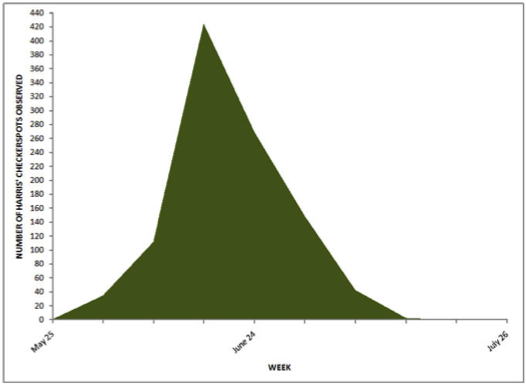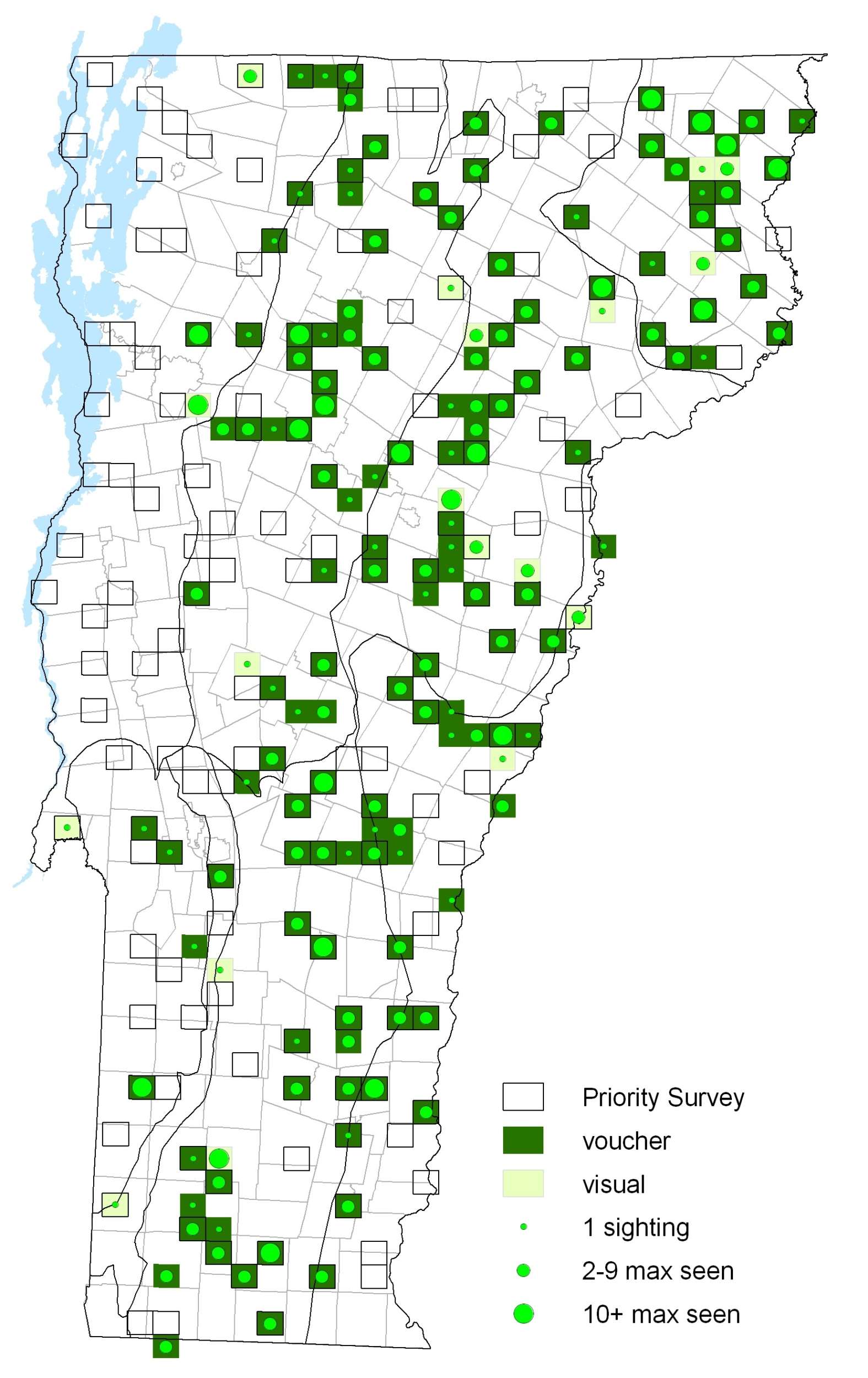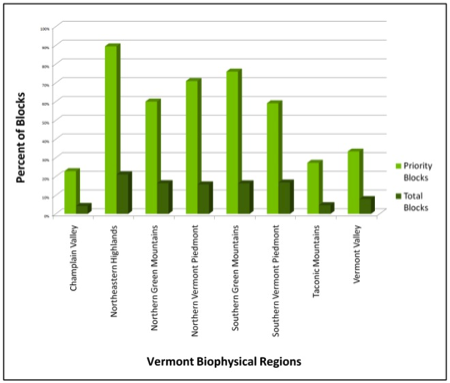|
Resident Conservation Status North American Range |
They are slow fliers and are usually found in close proximity to their larval host plant. Females lay eggs in clusters under host plant leaves. Caterpillars feed on leaves communally in a web. Partially-grown caterpillars overwinter at the base of the hostplant. Larval predation can be very high in some years, causing dramatic cyclical swings in their populations.
Identification
Upperside is orange with black markings. Underside of hindwing has a red-orange stripe at the margin and a red-orange, white, and black checkered pattern on remainder of wing.
Flight
One brood flying from the end of May through the beginning of July. Extreme dates: 2 June 2004 in Montpelier (C. Darmstadt), 26 July 2004 in Washington (A. Aversa), and 14 August 1980 in Grafton (S. Parren).
Distribution and Habitat
Scudder (1889) wrote that “In Vermont it is recorded only from Montpelier (Sprague) and Stow[e], ‘very abundant’ (Miss Soule).” Generally found throughout Vermont during VBS, but absent or rare in western lowlands. It is seldom found far from where its only hostplant, Flat‑topped Aster (Aster umbellatus), grows. These include wet meadows, swales, powerline clearings, road edges, stream banks, and other open areas. 







